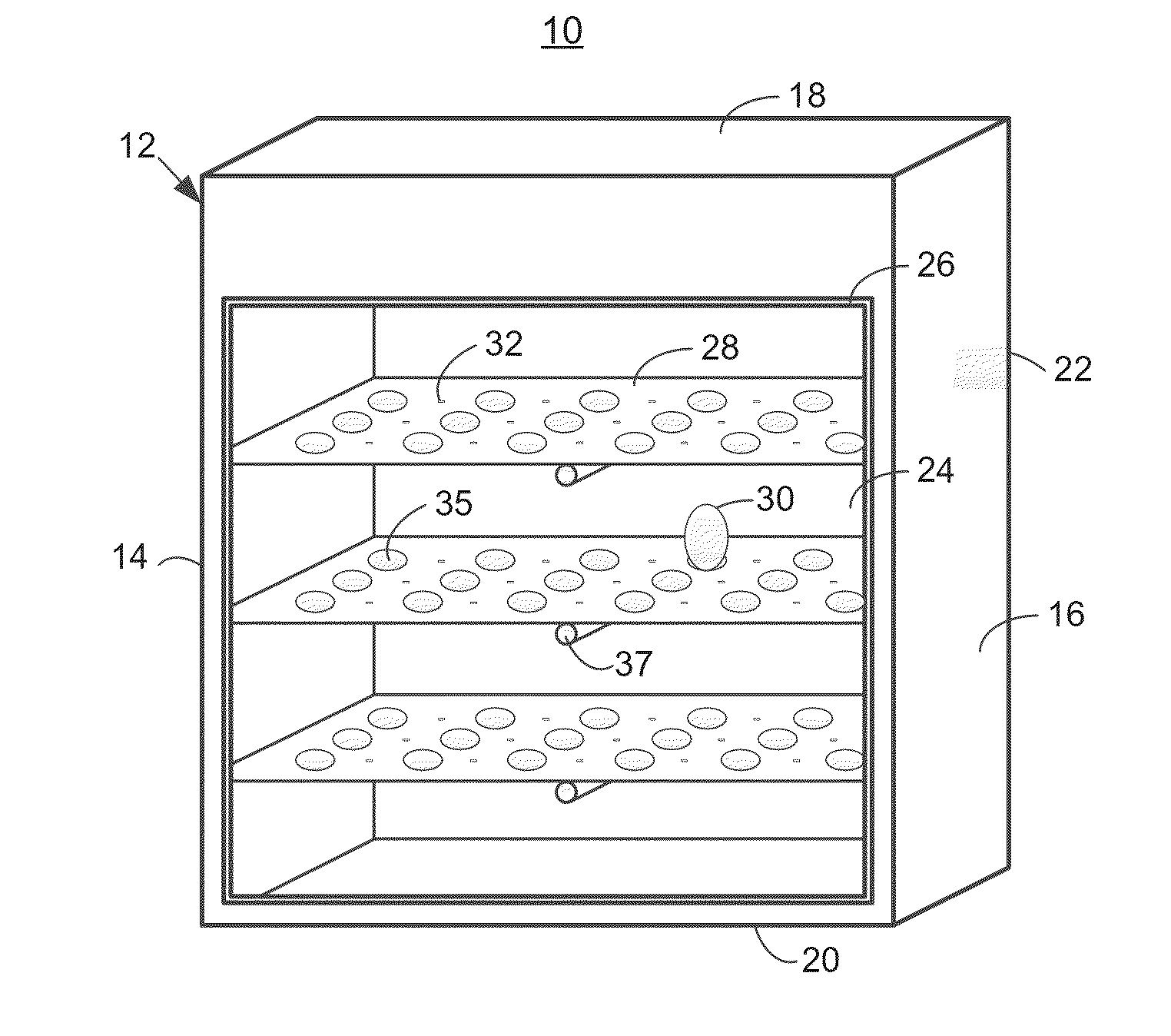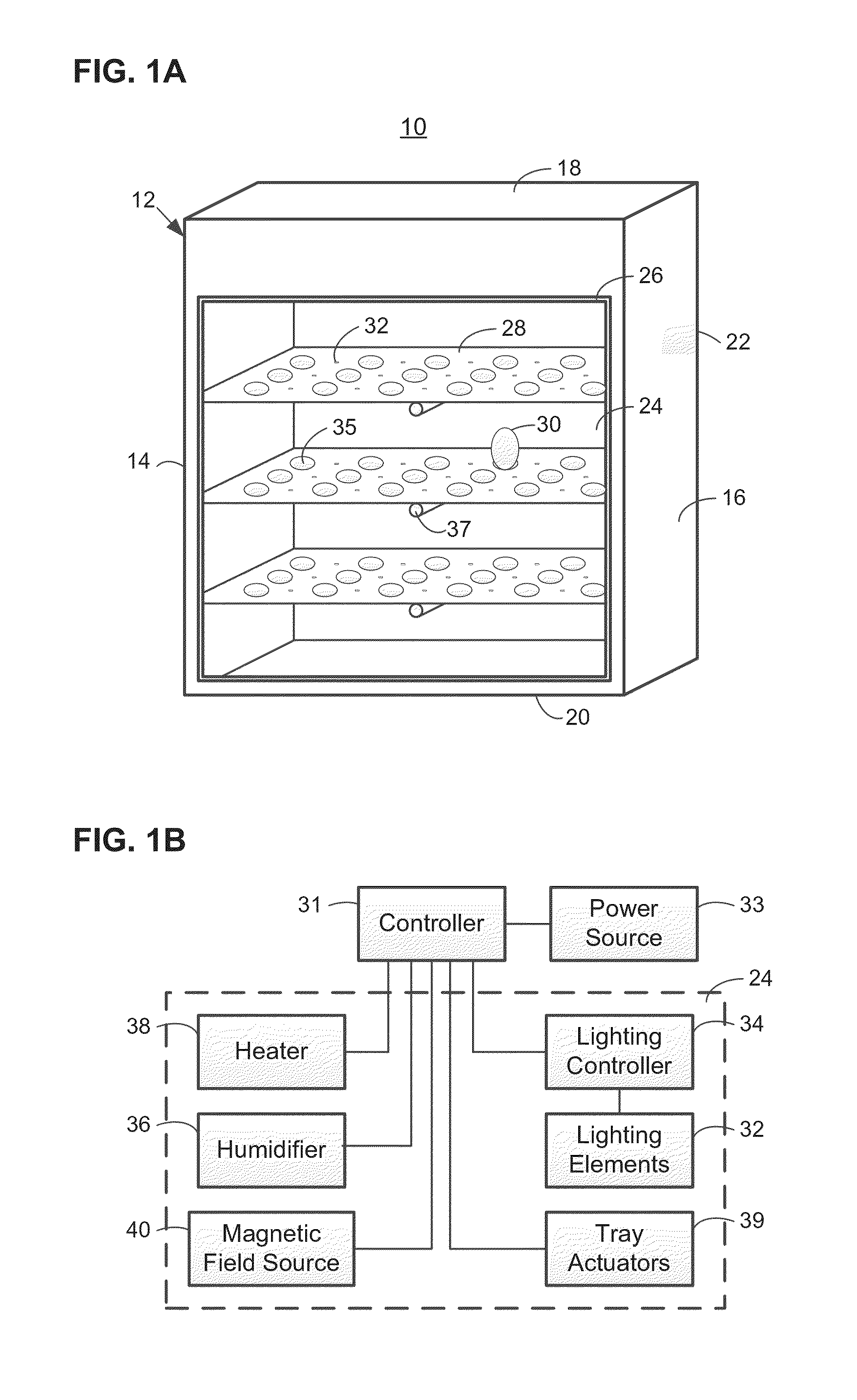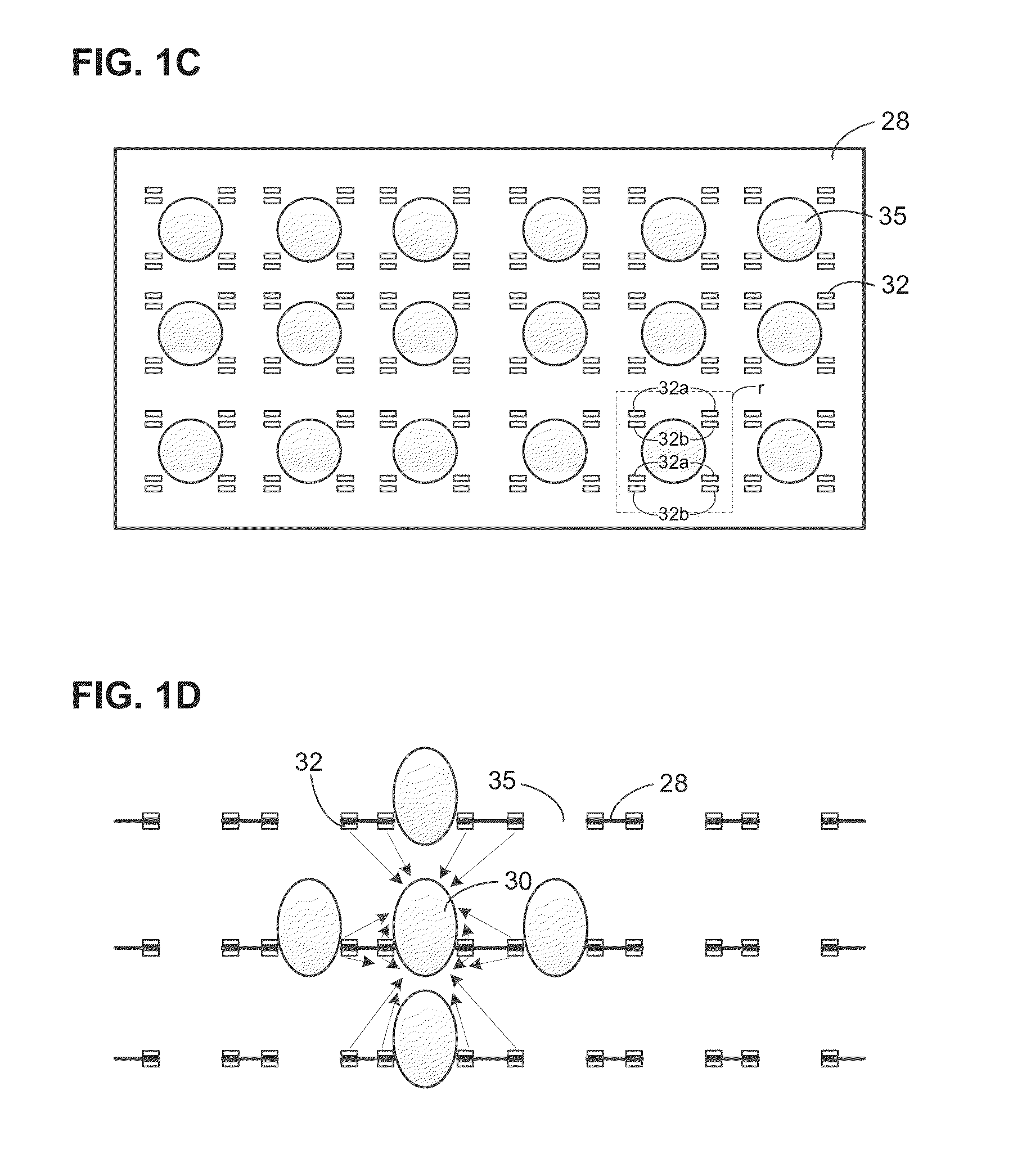Methods for controlling sex of oviparous embryos using light sources
a technology of oviparous embryos and light sources, applied in the field of controlling the sex of oviparous embryos using light sources, can solve the problems of reducing hatchability, affecting the economic benefits of gender change, and affecting the hatchability of avian babies at such operations
- Summary
- Abstract
- Description
- Claims
- Application Information
AI Technical Summary
Benefits of technology
Problems solved by technology
Method used
Image
Examples
Embodiment Construction
[0031]In the following detailed description, numerous specific details are set forth by way of examples in order to provide a thorough understanding of the relevant teachings. However, it should be apparent to those skilled in the art that the present teachings may be practiced without such details. In other instances, well known methods, procedures, components, and / or circuitry have been described at a relatively high-level, without detail, in order to avoid unnecessarily obscuring aspects of the present teachings.
[0032]The various systems and methods disclosed herein relate to controlling or influencing the sex of embryos in eggs in order to promote the development of embryos of a selected sex.
[0033]The systems and methods rely on the application of light having selected wavelengths to incubated eggs in order to influence the sex ratios of embryos in development within the eggs. The systems include an incubating device having an interior cavity in which lighting elements emitting ...
PUM
 Login to View More
Login to View More Abstract
Description
Claims
Application Information
 Login to View More
Login to View More - R&D
- Intellectual Property
- Life Sciences
- Materials
- Tech Scout
- Unparalleled Data Quality
- Higher Quality Content
- 60% Fewer Hallucinations
Browse by: Latest US Patents, China's latest patents, Technical Efficacy Thesaurus, Application Domain, Technology Topic, Popular Technical Reports.
© 2025 PatSnap. All rights reserved.Legal|Privacy policy|Modern Slavery Act Transparency Statement|Sitemap|About US| Contact US: help@patsnap.com



